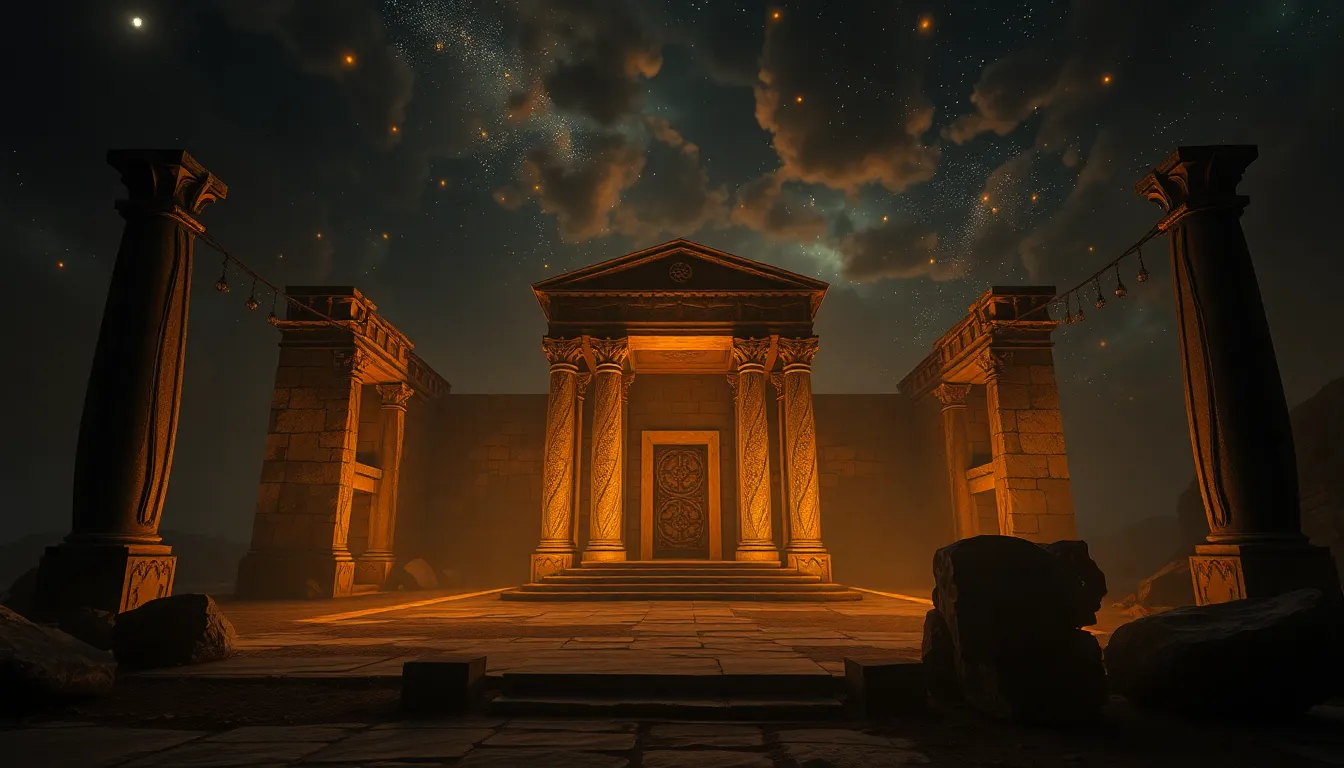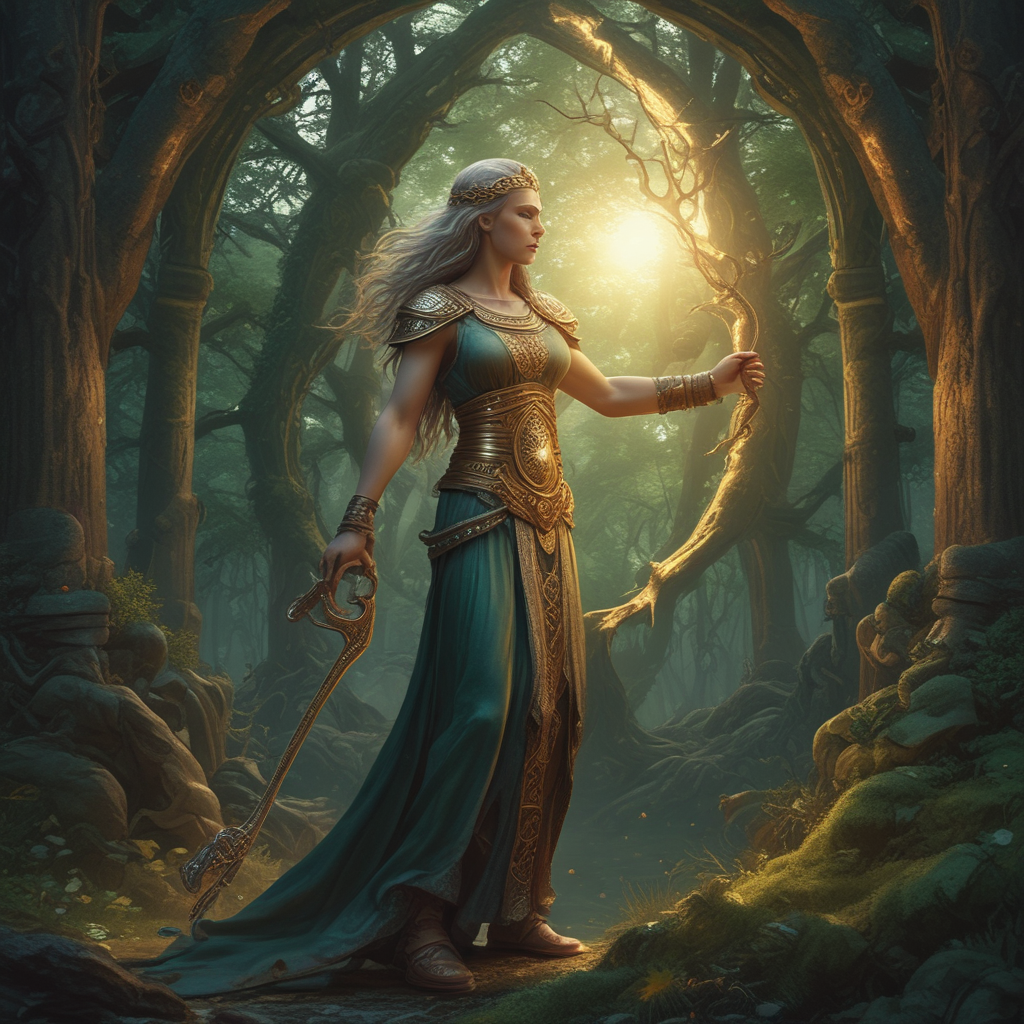The Wolf’s Sacrifice: Fenrir’s Role in the Renewal of the Cosmos
I. Introduction
In Norse mythology, Fenrir is a colossal wolf, a figure of immense power and complexity. He is well-known for his significant role in the mythological tapestry that defines the Norse cosmos. Fenrir embodies the themes of fear, destiny, and ultimate transformation, making him a pivotal character in the narratives of the ancient Norse. The notion of sacrifice is a recurring theme in many mythological tales, and Fenrir’s story is no exception. This article aims to explore Fenrir’s role as a sacrificial figure and how his actions contribute to the renewal of the cosmos during Ragnarök, the cataclysmic event that leads to the end of the world and its subsequent rebirth.
II. The Origins of Fenrir
Fenrir’s origins are steeped in the rich lore of Norse mythology. He is the offspring of the trickster god Loki and the giantess Angerboda. His birth is intertwined with prophecies that foretell doom for the gods, making Fenrir a figure of both dread and fascination.
A. Birth and lineage of Fenrir
- Parents: Fenrir is the son of Loki, a complex and unpredictable deity, and Angerboda, a giantess who represents chaos and the unknown.
- Siblings: Fenrir’s siblings include Jörmungandr, the world serpent, and Hel, the goddess of the underworld, both of whom also play crucial roles in the mythological narrative surrounding Ragnarök.
B. Prophecies surrounding Fenrir’s destiny
From the moment of his birth, prophecies hinted at Fenrir’s destructive potential. The gods, aware of the foretold chaos and destruction associated with him and his siblings, were filled with trepidation. These prophecies laid the groundwork for Fenrir’s complicated relationship with the gods, ultimately leading to their attempts to control and bind him.
C. Initial perceptions of Fenrir among the gods
The gods initially viewed Fenrir with a mixture of curiosity and fear. While they recognized his potential for great power, they were also aware of the dangers he posed. This duality of perception would shape their actions towards Fenrir throughout his life.
III. Fenrir’s Growth and Imprisonment
As Fenrir grew, so did his strength and ferocity, prompting the gods to take drastic measures to contain him.
A. Fenrir’s rapid growth and increasing power
Fenrir’s growth was unnatural; he quickly surpassed all expectations, becoming a creature of immense size and terrifying strength. This alarming growth prompted the gods to reconsider their approach to dealing with him.
B. The gods’ fear and decision to bind Fenrir
Fearing the prophecies that foretold Fenrir’s role in their demise, the gods decided to bind him. This decision was not made lightly, as they understood the implications of their actions and the potential for further conflict.
C. The creation of Gleipnir: the magical binding
To restrain Fenrir, the gods commissioned the creation of Gleipnir, a magical binding made from six mythical components, including the sound of a cat’s footsteps and the roots of mountains. This binding was both a physical and symbolic representation of their efforts to control fate.
IV. The Role of Fenrir in Ragnarök
Fenrir’s role in Ragnarök is critical, as he embodies the chaos that leads to the end of the world as the gods know it.
A. The prophecy of Ragnarök and its significance
Ragnarök is a central theme in Norse mythology, representing the apocalypse where gods, giants, and various creatures battle in a final confrontation. Fenrir is prophesied to break free from his bindings during this event, signifying the unleashing of primal chaos.
B. Fenrir’s foreseen actions during the end times
During Ragnarök, Fenrir is foretold to engage in a fierce battle against Odin, the chief of the gods. This confrontation symbolizes the ultimate clash between order and chaos, with Fenrir representing the inevitable destruction that follows the gods’ hubris.
C. The symbolism of his fight against Odin
Fenrir’s fight against Odin is rich with symbolism. It represents the struggle against fate and the cyclical nature of life and death. Odin, who embodies wisdom and foresight, is defeated by Fenrir, reflecting the themes of sacrifice and renewal inherent in the myth.
V. The Sacrifice of Fenrir
The concept of sacrifice is deeply woven into the fabric of mythology, and Fenrir’s story encapsulates this theme profoundly.
A. The concept of sacrifice in mythology
In many mythological narratives, sacrifice is portrayed as necessary for transformation and renewal. Fenrir’s sacrifice during Ragnarök is emblematic of this idea, representing both an end and a new beginning.
B. Fenrir’s sacrifice during the battle of Ragnarök
In the climactic battle of Ragnarök, Fenrir ultimately meets his demise at the hands of Vidar, Odin’s son. This event marks a significant turning point, as Fenrir’s death, while tragic, is crucial for the rebirth of the cosmos.
C. Implications of his death for the cosmos
Fenrir’s death signifies the destruction of the old world and the necessary sacrifices that pave the way for renewal. His sacrifice is not merely an end, but a catalyst for the regeneration of life and the cosmos.
VI. Renewal of the Cosmos: A New Beginning
Following the cataclysmic events of Ragnarök, the world undergoes a profound transformation.
A. The aftermath of Ragnarök and the destruction of the old world
The aftermath of Ragnarök sees the destruction of the existing order, with many gods perishing and the world engulfed in chaos. This destruction, however, is not the final chapter.
B. Fenrir’s role in the rebirth of the cosmos
In the wake of destruction, Fenrir’s sacrifice plays a pivotal role in the birth of a new world. The cycle of destruction and rebirth is a fundamental aspect of Norse cosmology, where death is intertwined with new beginnings.
C. The cyclical nature of life and death in Norse beliefs
Norse beliefs emphasize the cyclical nature of existence, where life and death are interconnected. Fenrir’s journey reflects this cycle, illustrating how chaos and order are perpetually at play in the cosmos.
VII. Fenrir in Modern Interpretations
Fenrir’s legacy extends beyond ancient texts, influencing contemporary literature and media.
A. Fenrir’s influence in contemporary literature and media
Today, Fenrir appears in various forms of popular culture, from novels to films, often embodying themes of chaos, power, and transformation.
B. Themes of sacrifice and renewal in modern narratives
Modern interpretations frequently revisit the themes of sacrifice and renewal, paralleling Fenrir’s journey with contemporary struggles against fate and the quest for identity.
C. Fenrir as a symbol of chaos and transformation
As a symbol of chaos, Fenrir serves as a reminder of the power of nature and the inevitability of change. His story encourages a reflection on how chaos can lead to transformation, a theme that resonates in our modern context.
VIII. Conclusion
In conclusion, Fenrir holds a position of immense significance within Norse mythology. His journey from a feared creature to a sacrificial figure in the narrative of Ragnarök illustrates the complexities of fate, sacrifice, and renewal. Fenrir’s legacy endures, reminding us of the integral themes of transformation inherent in mythology. As we reflect on his story, we are prompted to consider the cyclical nature of life, the inevitability of change, and the profound impact of sacrifice on the renewal of existence.



